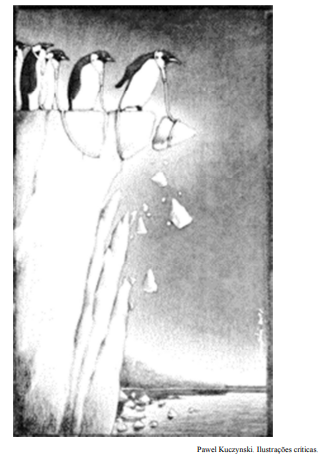Questões de Vestibular
Foram encontradas 69.760 questões
Resolva questões gratuitamente!
Junte-se a mais de 4 milhões de concurseiros!

Os problemas internos enfrentados pela Nigéria são, em grande parte, uma consequência do artificialismo que marcou a sua formação como Estado-nação durante o período colonial.

A pandemia de covid-19 ficou marcada pela distribuição igualitária das vacinas e pela garantia do acesso ao atendimento médico em regiões como a África e a América do Sul, o que minimizou as assimetrias causadas pela concentração do poder econômico e político no norte global.

A Revolução Industrial promoveu um aumento da demanda por matérias-primas e da exploração da mão de obra no mundo, bem como acelerou as mudanças tecnológicas, fatos que, associados ao racismo científico e ao imperialismo europeu, estão relacionados à ocupação colonial na África e na Ásia, nos séculos XIX e XX.

A produção de matérias-primas no continente africano, como o cacau, o café e os minérios, que abastece grandes indústrias europeias de alimentos e de celulares, destaca-se pelo respeito aos direitos humanos dos trabalhadores e pela preservação ambiental.

A origem dos desertos do Saara e Kalahari, na porção norte da África, tem relação com a existência, ao longo do Trópico de Câncer, de uma zona de permanente baixa pressão atmosférica, que é concentradora de ventos.

As explorações coloniais realizadas pelos países europeus na África e as novas formas de imperialismo econômico no contexto pós-colonial causaram impactos destruidores em diversos espaços naturais africanos.

A obra alerta para os impactos dos eventos climáticos extremos e severos na vida marinha.

O problema denunciado pelo relatório do IPCC restringe-se à interpretação apresentada pelo artista.

O artista aborda, de forma dramática, as consequências das atitudes humanas em relação à natureza.

As obras de Kuczynski ilustram problemas cujas causas requerem uma postura proativa dos seres humanos.

A obra contesta, por meio de uma metáfora, o alerta publicado pelo relatório do IPCC.
A referida obra alerta para um problema invisibilizado no cotidiano dos grandes centros urbanos.
Por meio dessa sua criação artística, Eduardo Srur provoca o espectador a refletir sobre a complexa relação do ser humano com a natureza no cotidiano urbano.
Nessa obra, a presença de uma garrafa em escala monumental evidencia a preocupação da população urbana com a preservação dos rios.
A obra adquire um significado ecológico em face do contexto da paisagem urbana poluída.

Os mares pedem socorro, e a indústria têxtil é uma das que mais contribuem para a poluição dos oceanos, o que, felizmente, vem sendo cada vez mais discutido por artistas. Toda a matéria-prima utilizada (lã, algodão e lyocell) na obra de Vanessa Barragão, por exemplo, vem dos resíduos descartados por uma indústria de tapetes artesanais.
Beleza e incerteza: Vanessa Barragão chama atenção para a devastação dos corais. Internet: <designdobom.com.br> (com adaptações).
Da leitura do texto depreende-se que a obra ilustrada provoca um efeito paradoxal ao representar corais vivos com material descartado pela indústria têxtil.

Os mares pedem socorro, e a indústria têxtil é uma das que mais contribuem para a poluição dos oceanos, o que, felizmente, vem sendo cada vez mais discutido por artistas. Toda a matéria-prima utilizada (lã, algodão e lyocell) na obra de Vanessa Barragão, por exemplo, vem dos resíduos descartados por uma indústria de tapetes artesanais.
Beleza e incerteza: Vanessa Barragão chama atenção para a devastação dos corais. Internet: <designdobom.com.br> (com adaptações).
Entende-se das informações presentes no texto que a indústria têxtil doa material à artista como contribuição para a despoluição dos mares.

Os mares pedem socorro, e a indústria têxtil é uma das que mais contribuem para a poluição dos oceanos, o que, felizmente, vem sendo cada vez mais discutido por artistas. Toda a matéria-prima utilizada (lã, algodão e lyocell) na obra de Vanessa Barragão, por exemplo, vem dos resíduos descartados por uma indústria de tapetes artesanais.
Beleza e incerteza: Vanessa Barragão chama atenção para a devastação dos corais. Internet: <designdobom.com.br> (com adaptações).
Por meio da referida obra, construída a partir de materiais reciclados, a mencionada artista critica o descarte de lixo nos mares.

Os mares pedem socorro, e a indústria têxtil é uma das que mais contribuem para a poluição dos oceanos, o que, felizmente, vem sendo cada vez mais discutido por artistas. Toda a matéria-prima utilizada (lã, algodão e lyocell) na obra de Vanessa Barragão, por exemplo, vem dos resíduos descartados por uma indústria de tapetes artesanais.
Beleza e incerteza: Vanessa Barragão chama atenção para a devastação dos corais. Internet: <designdobom.com.br> (com adaptações).
Ao desenvolver seu trabalho com base em uma produção sustentável, a referida artista demonstra consciência ecológica, ao mesmo tempo em que contribui para uma maior conscientização do público em relação à questão ambiental.
Devido à rapidez da formação de um ciclone extratropical, é imperativo que, durante a sua ocorrência, todas as atividades marítimas, entre elas a pesca, sejam interrompidas por questões de segurança.
